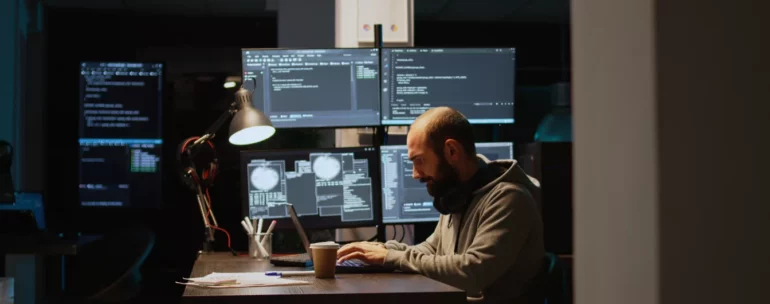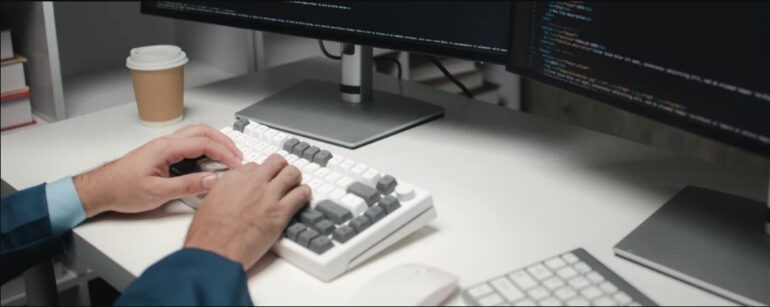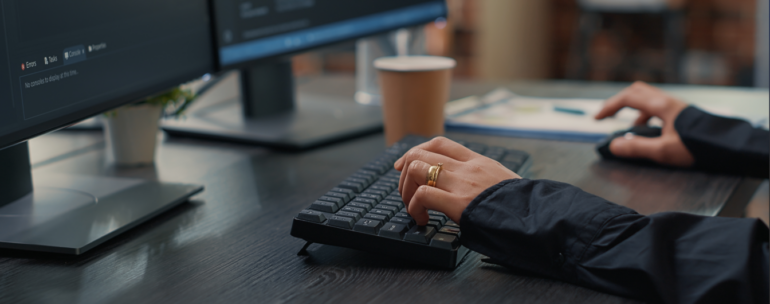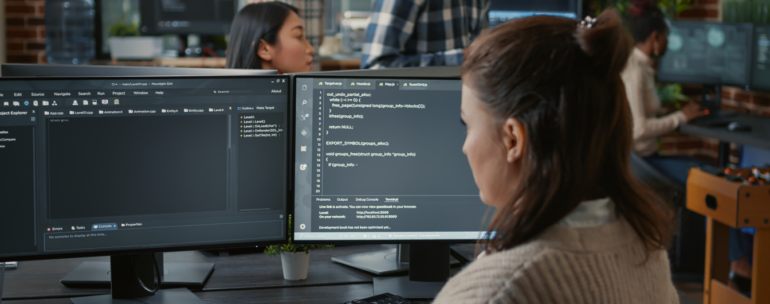EPAM Team in the Final for NASAs MarsXR2 Challenge. Interview with Nataliia Savchenko
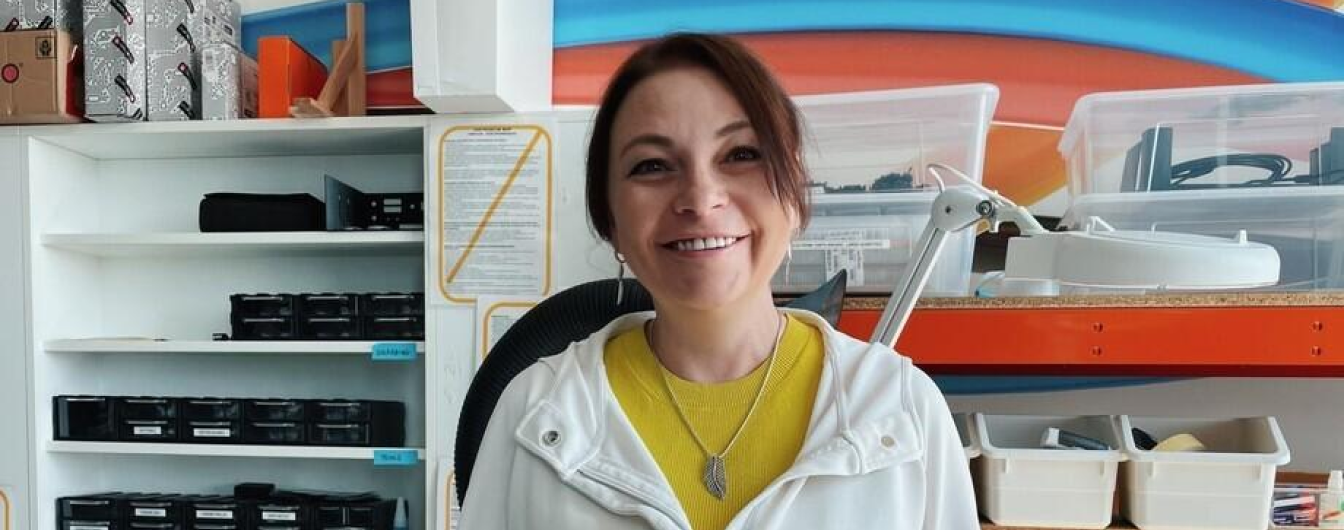
EPAM designers advanced to the finals of the NASA MarsXR2 Challenge. The finalists, selected by NASA experts, developed a vision for an approach to collecting rock samples on Mars. Nataliia Savchenko, team captain from EPAM Poland, talks about the details of the project.
Spis treści
First, congratulations, because I think winning the NASA competition is a great achievement for you and for EPAM. How did you find out about the project?
In February, I had a meeting with a colleague from EPAM Germany, who is a Product Manager. He became interested in the NASA challenge and asked if I wanted to take part in it. I agreed and started looking for people to join my team. During the first meeting, 26 people applied, but finally a group of 6 people was formed.
Did you organize roles for the team?
No, because it’s an extreme project. When I asked who was able to find time for this challenge, many people explained that they had a lot of work, others were not interested. I guessed that some of them did not believe in our chances in the competition. We had very little time to prepare the project and I was stressed that we would not make it on time.
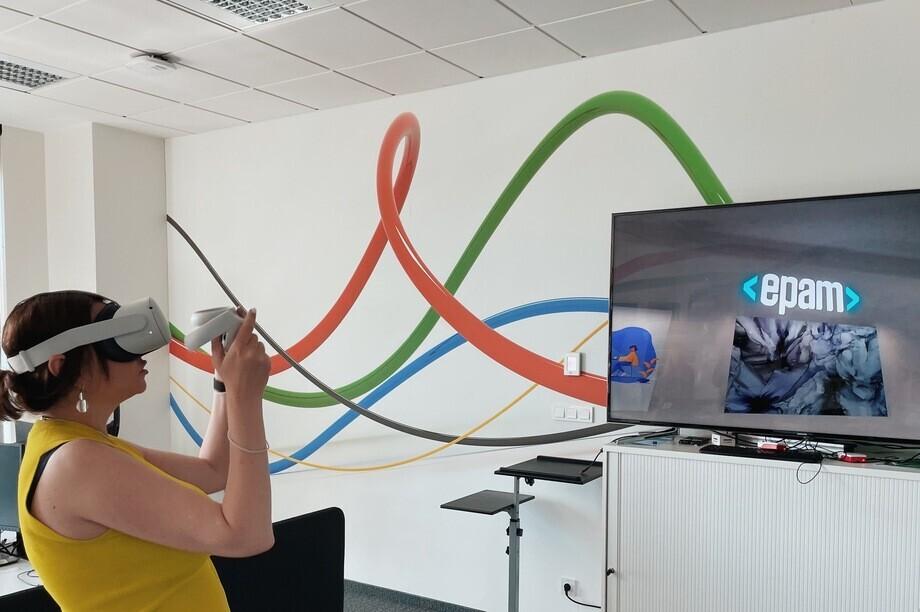
How long did you work on this project?
One month, and it was hard work that we did mostly at night. We had meetings during the day and many people now think that our project was created during meetings. However, only after work could we focus on preparing the storyboard, watching films about Mars, or looking for various information.
Can you describe your solution in a few words?
At first glance, our work looks like a storyboard. In fact, it could not just be pictures, but also training information for instructors. No one knows how it is on Mars or what the situation may be. So we had to prepare different scenarios and describe what could happen. For example, in the scenario of collecting stones, we added information about what tools would be needed and what solutions could be used. We described every tool that we put into our script and created a storyboard that looks like a comic book.
In the second phase we will have to create 3D assets and transfer them to virtual reality. It is a real challenge for designers and programmers.
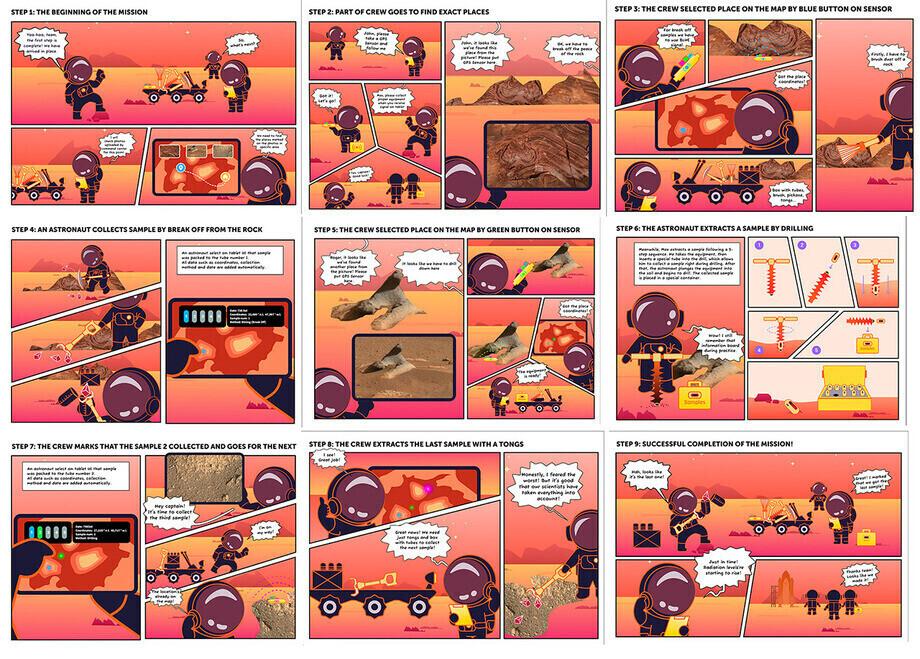
What was a source of inspiration and information for your team?
Three days before the end of the challenge, we didn’t know how to present the results of our work. Then one of our team members suggested a comic book style and we created our storyboard.
How much competition did you have?
260 teams from different countries took part in this competition.
That’s a really big number! What else, apart from beating the competition, was a challenge for you in this project?
The whole project was a big challenge. When we chose the scenario of collecting rock samples, we started looking for information on what tools would be best for this. This task was very laborious. In many documentaries about Mars, we noticed that samples cannot be taken by hand. You should use tongs and then put the stone into a clean tube and thus transfer it to the Earth. NASA wants to know if there is water on Mars and if there are chances for life to develop. To study this you have to go deeper; taking samples only from the surface is not enough. The best method would be to use a drill, but on Mars you don’t have the option of using electric equipment. So we were looking for information in the field of geology. We finally discovered a video that showed a group of gold diggers on Earth. They showed a special drill with a sleeve that allows you to take materials from inside the rocks. We got inspired.
The most interesting thing is that we don’t actually know what these solutions are supposed to look like, because we are not device engineers, so we were constantly looking for inspiration: we watched various movies: for example from the Apollo mission to Mars — and we created and improved current solutions. We once saw special snake-catching pliers in a movie that has a great mechanism — why not use it in our task?
How do you feel now? I suspect that you can be happy on the one hand and feel stress on the other.
As soon as we found out we had won, we were very happy. Now I’m a little stressed because a lot of attention is being paid to our team in the company. I didn’t expect this. We are currently in the second stage of the challenge — we work a lot and are looking for new people to join our team.
What motivates you to win now?
EPAM is a great company that works with many well-known brands. I think every company would like to be connected to NASA in some way, and I have a chance to get that connection. It motivates me a lot because I would like to know more about how this organization works. Since I am educated as a rocket science engineer, I got this chance to apply my knowledge.
This article was originally published on wearecommunity.io. The article’s main photo is from envato.com.

